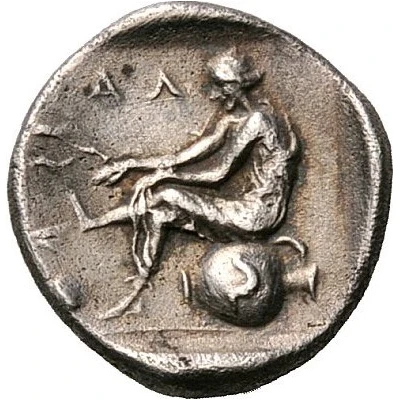


© Nomos AG
Obol 450 BC - 430 BC
| Silver | 0.63 g | - |
| Issuer | Larissa (Thessaly) |
|---|---|
| Type | Standard circulation coin |
| Years | 450 BC - 430 BC |
| Value | Obol (⅙) |
| Currency | Drachm |
| Composition | Silver |
| Weight | 0.63 g |
| Shape | Round (irregular) |
| Technique | Hammered, Incuse |
| Demonetized | Yes |
| Updated | 2024-10-10 |
| Numista | N#170983 |
|---|---|
| Rarity index | 100% |
Reverse
Petasos and kerykeion and all within incuse square
Script: Greek
Lettering: Λ Α Ρ
Comment
Apparently unique.
Interesting fact
The Obol coin from Larissa (Thessaly) was used as a form of currency in ancient Greece and was equivalent to one-sixth of a drachma. It was made of silver and weighed 0.63 grams. Despite its small size, the Obol was an important coin in ancient Greece, as it was used to buy everyday items like bread, wine, and other necessities. It was also used to pay taxes and debts. The Obol coin was minted in Larissa, which was an important city in Thessaly, a region in central Greece. The coin features an image of a horse on one side and a helmeted warrior on the other. Today, the Obol coin is a valuable collector's item and is highly sought after by numismatists.



